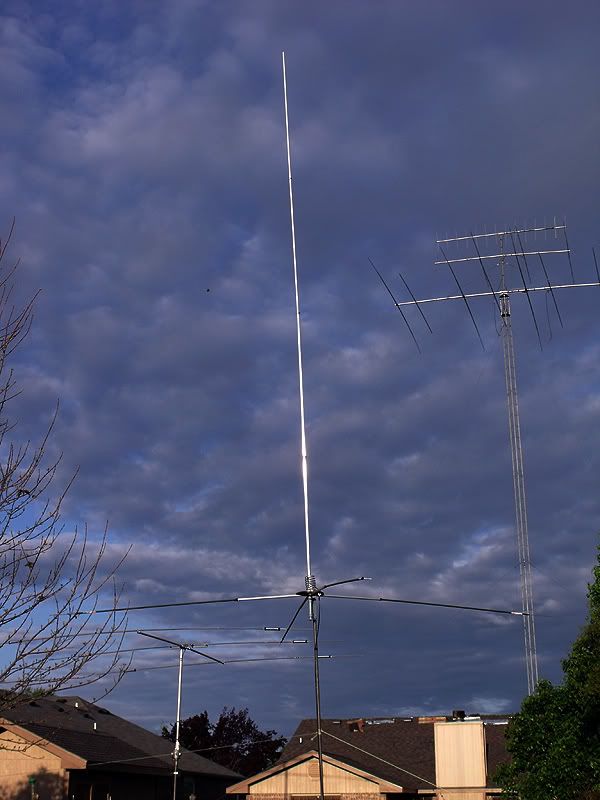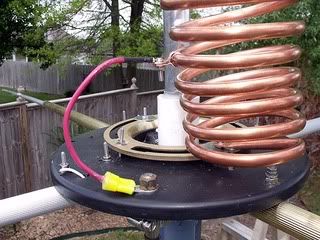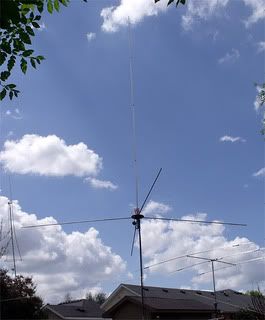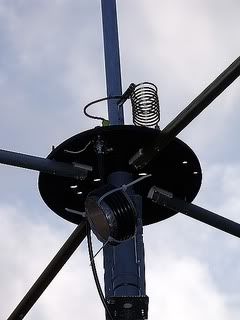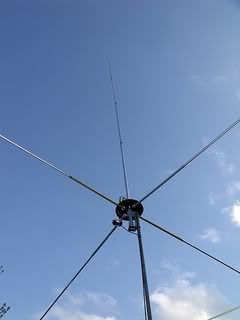OK, The quality of these pictures are crap, but it is the best I can do at the moment.
Jay says the I10K has a usable bandwidth of 1.3 to 1.4 Mhz with SWR of 2 to 1.
I should play with the match and length of the antenna and probably get this a bit better, but I threw it up one afternoon, checked it with a SWR meter to make sure It was good on the phone band on ten and and have not touched it since.
The Last 2 photos I wanted to see were my MFJ would do the X=0 on both ends, and there you go.
I have never wanted to do this, that is why I found it Odd to see it on Homers, but there it is.
I guess i need to play with the analyzer more ...... I always look for 50/0 or as close as i can get with out too much work.
Interesting.
The band width of your home brew antenna is huge.
73
Jeff
Jeff, the following is not-withstanding the issue with Homer using the mode showing the phase angles instead of reactance.
I plotted Homer's last image results on one of my Antenna Work Sheets below. I did not add the frequencies that Homer used, so don't let that confuse the report.
View attachment Homer's bandwidth curve.pdf
However, even after you posted your images, I'm was still not sure what was happening that would causes both of your 259B's to coincidently suggest to me there was resonance at both ends, and somewhere else near the middle of the antennas bandwidth, excepting maybe that it was just coincidence. Now, that both of your reports are showing some reactance going up and down over frequency, as we might expect, this is not so confusing to me. I didn't see that in the beginning, and thus I asked a question of a young man that I admire and he gave me only a curt answer.
Jeff, what did you really think regarding your unexpected results?
I went back and checked, and I discovered that I've seen such results before with some of my bandwidth curves, but to be clear, that was not what I was asking Homer about in the beginning.
For sure, my meter does not appear to be as happy, if that is what is happening here, when using the frequency control knob or else something else is going on. That being a result that shows such a liberal X=0 reactance over the range as I saw indicated in Homer's first images, 1st over the CB bandwidth, and then later over the whole bandwidth for his antenna.
In my case, I have trouble sometimes just getting X=0, and for sure when I'm very close to X=0. Is that normal or not, I'm not sure, but I do know that reactance should change in fairly small increments with such measuring devices.
On the other hand my bandwidth chart does not look for specific values for X or R, it focuses on a balanced frequency excursion. Now my antenna tuning chart does allow me to search out the desired values for X, R, SWR, Z, in my process toward tuning.
IMO, zero reactance should generally indicate only at somewhat precise points, and the curve may show up as a sinuous shaped curve at times. If such results repeat it is generally over a very small range that should be very narrow, maybe even so narrow as to miss X=0, completely as you attempt to scan in frequency.
I think Homer's main mode images are still showing a rather broad range with X=0, and if that is possible, then that should be very good. I see X=0, from 27.855 - 27.335, which is .52 mhz and that is wider than the whole CB bandwidth at .44 mhz. If true, you can't beat that for resonance, and coming from a homemade antenna, I would consider that remarkable.
I have seen such results on my meter as noted in the I-10K graph below, where I also see several values for X=0, or small values of reactance being repeated within the whole bandwidth. My graphs might tend to show that happening when the reactance is going from inductive to capacitive, and the 259B does not display such a value for the reactance on its display, but MFJ does give the user a routine for establishing such a true value...based on a much closer reading of frequency results.
Technically I can't describe why this happens in the case of reactance, or if it makes any difference to the antenna results, but I doubt it makes any results that I could be detected just operating my radio.
If I'm right here, then I see nothing wrong with Homer's results, but IMO if reactance is to be ignored, then a fuller understanding is also likely being ignore. One might as well just consider using an SWR meter instead.
Hopefully this report will demonstrate much of my opinions as noted above.
View attachment I-10K bandwidth.pdf
Last edited:


